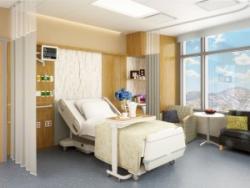Build It – And They Will Come? Maybe Not.
It’s no secret to anyone in the healthcare industry that there’s a huge emphasis on patient satisfaction scores these days – predominantly because they are so closely linked with reimbursement in the new healthcare landscape. Hospitals are taking ‘satisfaction’ a step further: how about patient aesthetic?
Build It – And They Will Come? Maybe Not.
It’s no secret to anyone in the healthcare industry that there’s a huge emphasis on patient satisfaction scores these days – predominantly because they are so closely linked with reimbursement in the new healthcare landscape. Hospitals are taking ‘satisfaction’ a step further: how about patient aesthetic?
Patient Satisfaction and Design
Patient Satisfaction Matters
Gone are the days when patients were limited to the country doctor or, in extreme cases, the closest city’s hospital – now, even in dire circumstances, patients can be transported to another hospital to receive care- and many will voluntarily choose a hospital that is towns or even states away if the facility and staff are more ‘up to date’ than closer options. It’s no longer enough for a hospital to do the basics; the staff, the design and the treatments all have to be stellar.
What Matters To Administrators Differs From What Matters To Patients
Some of the major areas of concern to a patient may not be the most important to the administration, the architects or the medical staff: privacy, for example, is far more important to a patient at a hospital receiving treatment than the efficiency of the electricity. While the latter may be of direct value to the administrators overseeing the budget, they can’t be so consumed by the essentials of operating a physical locale that they disregard “creature comforts.”
Patient Satisfaction, Growing Patient Demographics – and Growing Patients
Additionally, there’s a new design concern cropping up in hospitals nation wide: there is a need to redesign many traditional hospital staples to accommodate larger patients. In the U.S. obesity has become such a prevalent force in our nation’s health that designs that have been standard for decades in many industries: automobiles, airplanes and amusement parks – now have to be redesigned to accommodate larger “average” patients, consumers and drivers. This being said, current model hospital beds, gurneys, operating tables, imagining machines and even chairs found in waiting rooms and doctor’s offices all need to be redesigned to fit larger patients – because the reality is, a larger patient now is the average in many doctor’s offices, hospitals and healthcare systems nationwide.
Is your hospital or healthcare organization undergoing remodeling? Is it on your agenda for the next few years?
Comment below or Tweet us @bhmhealthcare to tell us what your biggest design challenges are.

